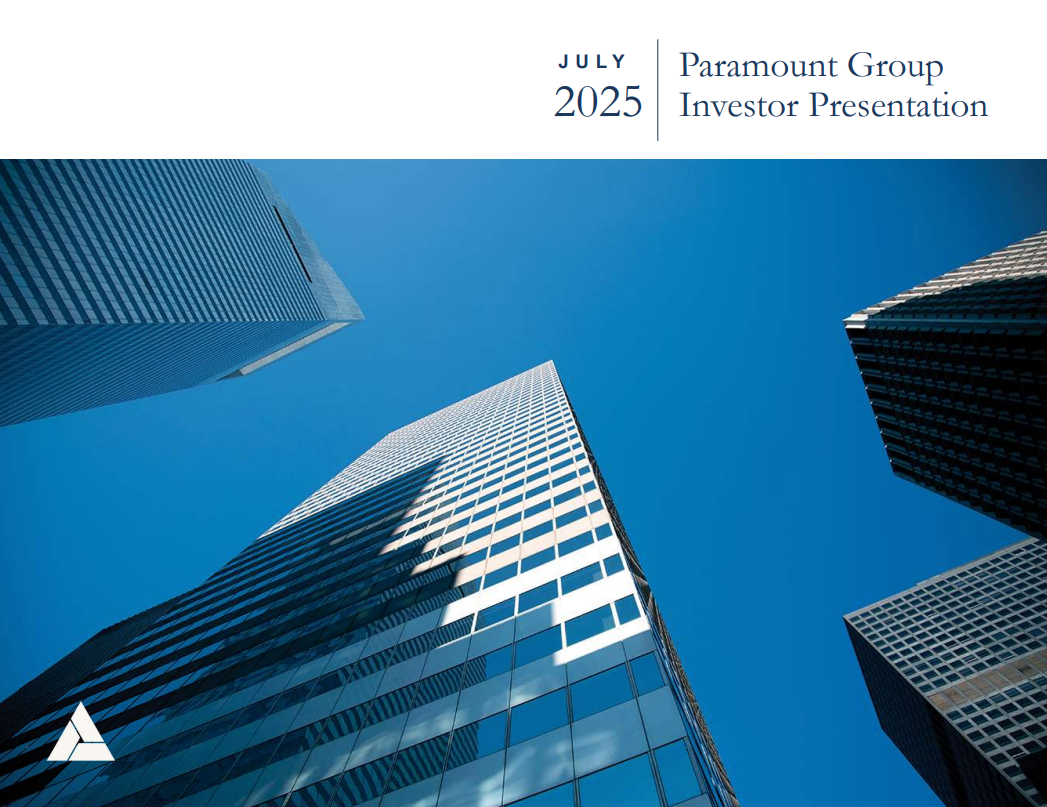
Prediction: Someone’s about to buy a big office REIT.
Here's why it shouldn't surprise you:
1) Distress meets solvable controversy
Paramount Group’s governance issues are glaring yet fixable. The company publicly disclosed $4 million in previously undisclosed payouts tied to CEO Albert Behler, including $1.7M for his private jet, $462K to his consulting firm, and even $12K for wine, prompting shareholder backlash/scrutiny and significant turnover.
2) Portfolio in prime, rebounding locales
PGRE’s footprint is concentrated in Manhattan and San Francisco—17 properties totaling ~13 million sq ft.
Midtown vacancy in NYC is improving, and leasing activity is accelerating. San Francisco remains challenged but shows signs of life.
3) Office debt markets are open again
Recent transactions show real momentum: PGRE just refinanced 1301 Avenue of the Americas with a $900M, five-year, interest-only loan at about 6.5% and several office borrowers have tapped CMBS/SASB markets in recent months at similar coupons.
4) Existing debt is an advantage
PGRE’s consolidated debt load is substantial (~60–70% of its likely purchase price), but its cheap at ~4.3%. More than half of its debt doesn’t mature until 2027 or later, which would give borrowers time to benefit from recovering office markets.
5) Synergies aren’t just buzz when it comes to REITs
PGRE spends $80M a year on G&A to manage 17 assets. Big office owners can immediately save much of this overhead.
6) Buyers are circling
Reports confirm multiple big-name bidders have entered Round Two: SL Green, ESRT, Vornado, Blackstone, and others like DivcoWest with Saray Capital. Most already own large NYC portfolios, meaning operational overlaps and economies of scale could be immediate. Their lower cost of capital (especially compared to PGRE’s) gives them a valuation edge.
7) The math works
Let’s assume PGRE trades at a 6–7% cap on its ~$300M NOI, implying a $5B valuation. That’s about 10% above its current trading value but is right in line with what a suitor with real synergies can justify.
Vornado and ESRT have similar costs of capital but SLG has a bigger advantage (close to 10%). And an income-oriented buyer like BREIT, although controversial as a buyer, would have something like a 15% cost of capital advantage.
---- Takeaway ----
You'll probably see something like the following hypothetical headlines in the coming weeks, which will catch a lot of attention.
-- “Blackstone Returns to NYC Office With $5B Paramount Buy"
-- “SL Green Doubles Down on Midtown: $5B Paramount Deal Makes NYC’s Biggest Landlord Even Bigger.”
-- “DivcoWest Buys a Massive Office Portfolio at a 6% Cap Rate”
...but none of them should surprise you.

COMMENTS